Bone conduction headphones are becoming more and more commonplace, thanks to the technology evolving and becoming more affordable. The advantages of this technology are several, and mostly revolve around the fact that your ears are not occluded. The Nank Runner Diver2 surely have a weird name, but they present themselves as a solution to the issue of listening to music while swimming thanks to the in-built storage and MP3 functionality. (A small note: when I was sent the headphones, the company was still called Naenka, so these were officially the Naenka Runner Diver2!)
Disclaimer: I received a free unit directly from Nank. They sell the Runner Diver2 for $133 on the official website or on Amazon from the link below.
TL;DR: recap
| Pros |
Cons |
| + Sufficient sound quality
+ Integrated music player + Can be used underwater & while swimming! + Decently long battery life |
– Can be uncomfortable, especially while wearing glasses
– Does not turn off automatically in MP3 mode – Very slow internal memory – No memory of last track & cumbersome seeking |
Rating: 7/10
Packaging & Accessories
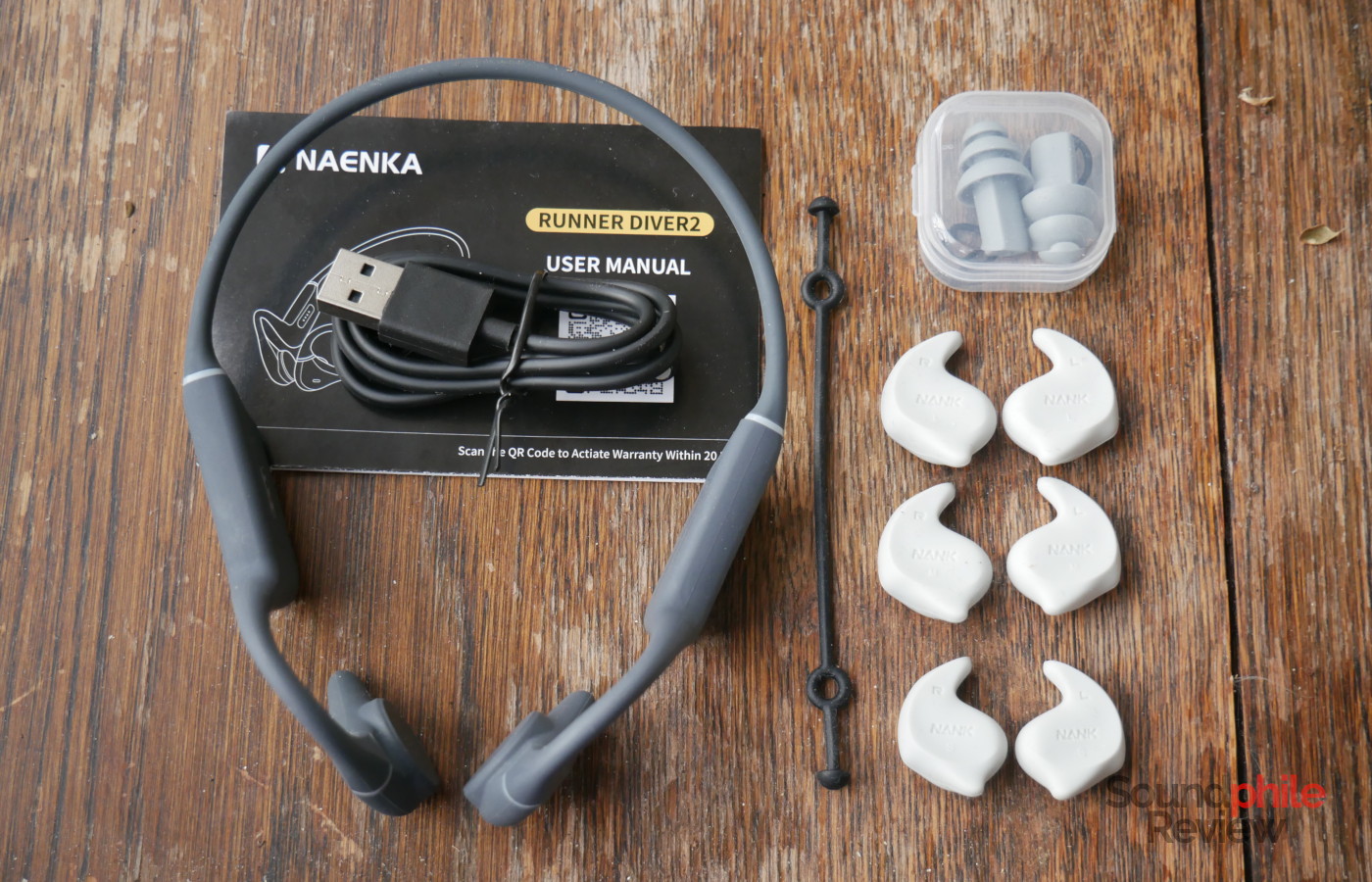
There’s quite a bit of accessories which come with the Runner Diver2: on top of the charging cable (which uses a proprietary pin connector), there are silicone inserts, triple-flanged earplugs and a silicone band to increase the lateral clamping force, together with the manual.
Design & Comfort
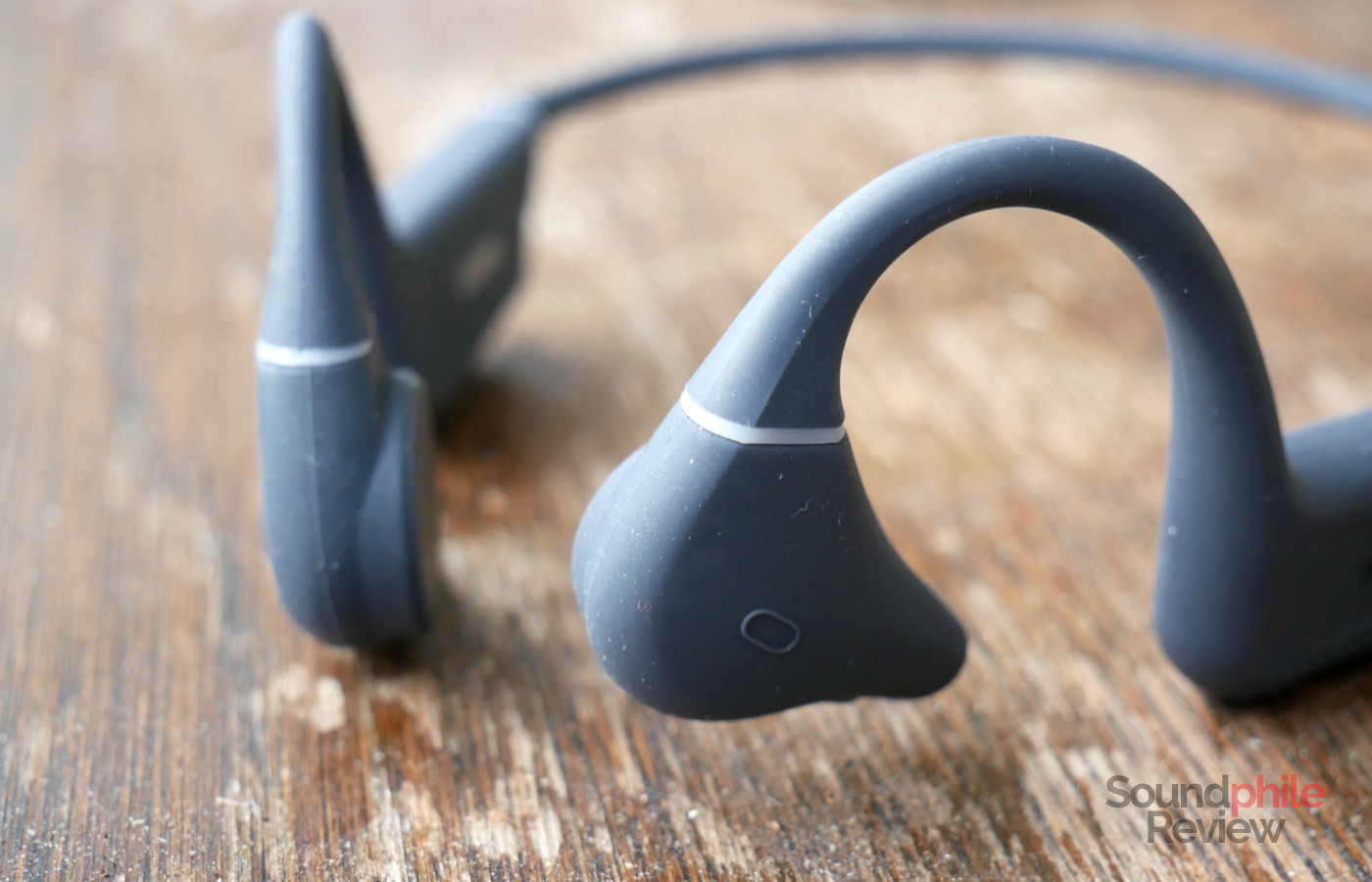
The design of the Nank Runner Diver2 isn’t wildly different from that of other bone conduction headphones (let’s abbreviate that to BCH); in fact, from this perspective they’re not exactly distinctive. The only thing that struck me was how large the contact surface for the driver is. There’s a metal band connecting the two ends which go over your ears with a hook-like shape and then around the back of your neck. All the controls (power/playback, vol+ and vol-) are on the right hand side, together with the microphone.
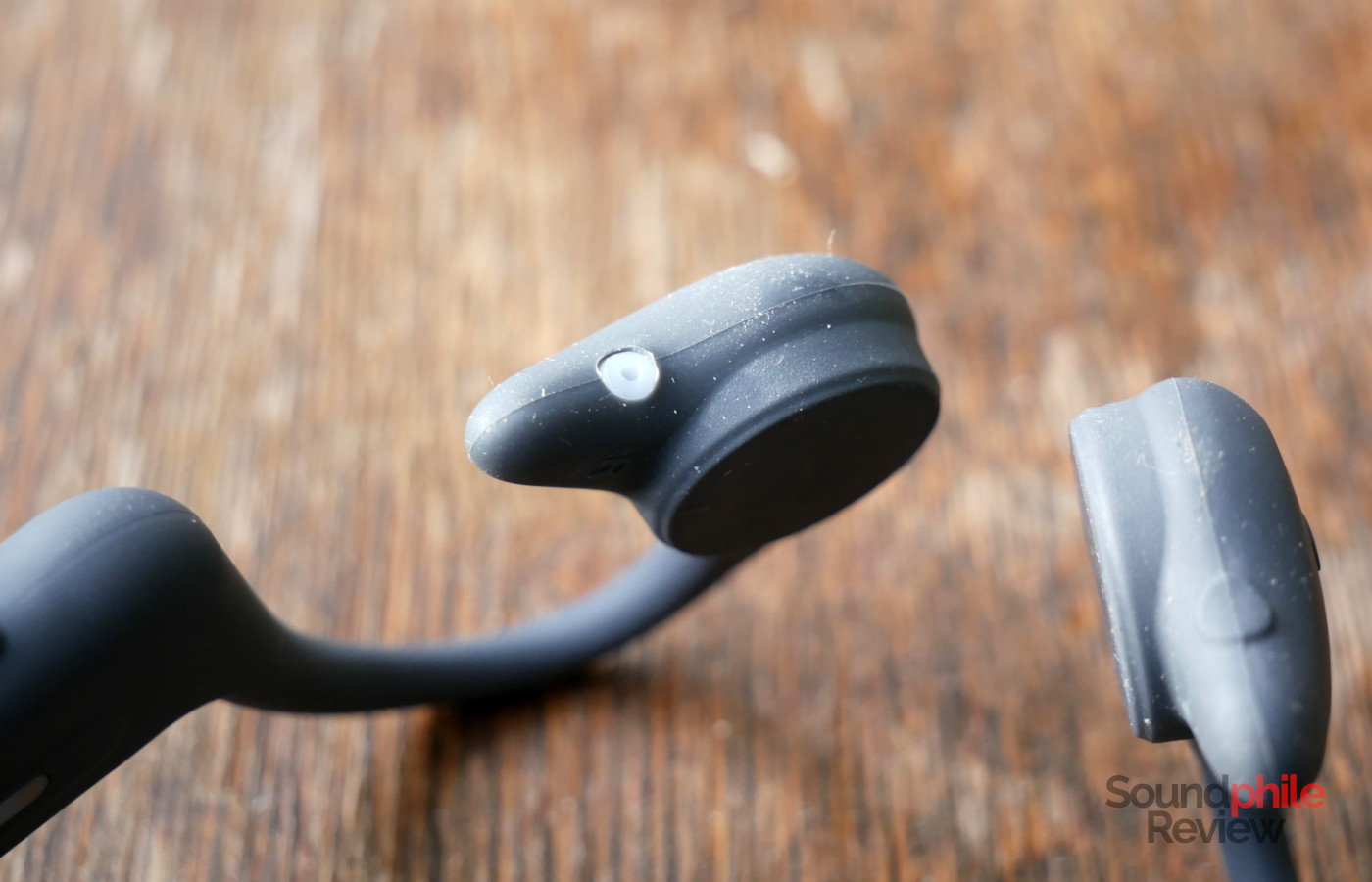
I find the Runner Diver2 to be very well built. The headphones are IP68 certified, which gives them enough resistant to water to make them suitable for swimming. The soft-touch silicone coating works very well and provides good comfort.
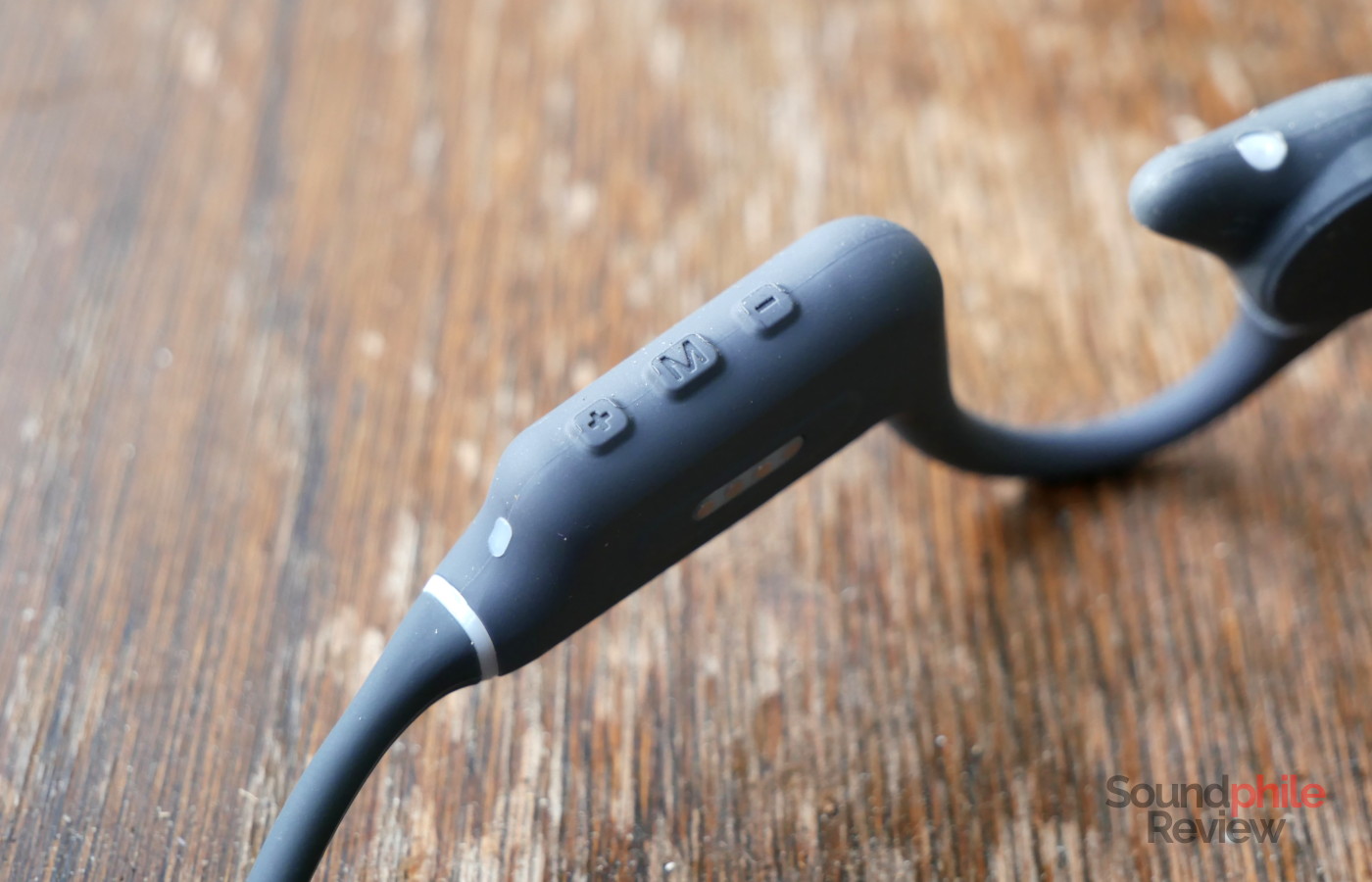
Comfort is acceptable, but the hook that goes over the ears can be a bit too small. In my specific case, it is just large enough to contain the pinna, which becomes sore after about half an hour of usage as there is still a bit of pressure applied to it. Having prescription glasses doesn’t help, either, as the frame tends to press against the glasses’ sticks and cause additional discomfort.
Isolation is obviously non-existent, which is by design. The included earplugs work very well in removing noise an they are also very comfortable.
Extra Features & Battery Life
The Nank Runner Diver2 offer Bluetooth 5.3 connectivity with SBC and AAC codecs. The range is really impressive as I can walk around the whole flat with no interruptions or stuttering; the connection is really stable and strong. They support multi-point connection as well, so you can connect both your phone and your computer, as an example.
The distinguishing feature of the Nank Runner Diver2 is that it can play audio files without the need to be connected to another device via Bluetooth. This makes it possible to listen to music while swimming, which is indeed the reason behind the name: Bluetooth, like the vast majority of electromagnetic waves, is stopped by a very thin layer of water and this makes it impossible to have earphones which can work underwater; the solution is then to simply embed a player inside the headphones themselves. The player supports MP3, WAV, M4A, APE and FLAC formats. Playback starts with the first track in the main folder and then goes on alphabetically through subfolders; this means that if you have a large collection, which the 32 GB of onboard memory can actually hold, it can take a while to reach the track you would like to listen to. The controls only allow you to skip to the next or previous song. The headphones do not hold any memory of what the last played track was, so you have to start anew every time in your search, which is quite inconvenient given the limited controls.
Playing music requires files, though, and one issue is that file copy is extremely slow. Copying an album with 11 tracks, for a total of just 340 MB, took 8 minutes. The on-board 32 GB memory (which convert to 29 GiB of effectively-usable memory) is convenient, but managing a large collection on it is a pain. The kind of speeds on offer here (~900 kbps) was commonplace fifteen years ago with cheap MP3 players, but nowadays it is expected of memories to be much faster than this. Filling the memory with music would take about 9 hours, in the optimistic occurrence where the speed is constant, and it goes without saying that this is very far from ideal.
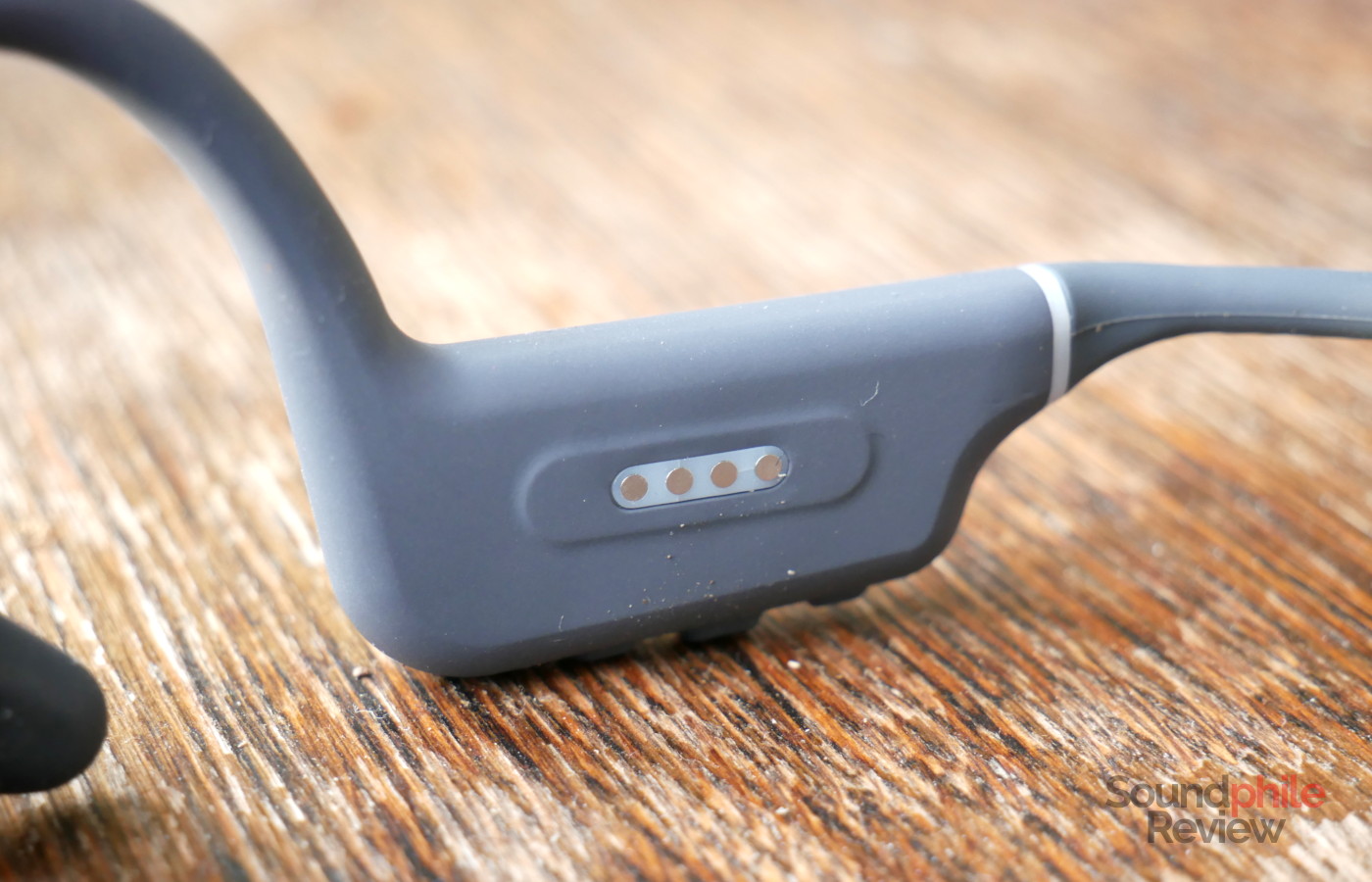
The microphone works well and people I talked to over the phone told me they could hear me clearly. The opposite was not necessarily true, though, as bass was overly present and made voices (even female ones!) quite muddy and therefore the words difficult to understand.
Battery life is quite good, as it grants around 10 hours of continued usage of the device when connected to a Bluetooth source. There are some issues with power management, though: the device should turn off automatically after one hour when in MP3 player mode, but it actually does not and it stays powered on until the battery runs out. As I am writing this, I stopped playback four hours ago and the headphones are still powered on. It should be noted that this is not what the headphones should theoretically do, as the company confirmed to me that they should power off after one hour idling.
Sound & Specs
I tested the Nank Runner Diver2 using my desktop PC, my Pixel 7 Pro smartphone as well as its own integrated audio player.
Nank Runner Diver2 |
| Frequency response | N/A |
| Impedance | N/A |
| Sensitivity | N/A |
| Bluetooth version | 5.3 |
| Codecs | SBC, AAC |
The Nank Runner Diver2’s signature is quite V-shaped, with prominent mid-bass and more prominent treble, though midrange isn’t so recessed as to sound too distant. Bass is surprisingly powerful, considering we are talking about BCH, and it actually makes listening to music kinda pleasing – even when you listen to stuff that’s not just vocals. It’s still limited compared to traditional headphones, though, especially when it comes to depth, and it’s also relatively slow; it doesn’t have any physicality, unless the track really pumps it up to 11. Midrange is shifted heavily towards the upper registers, which makes it quite bright overall and better suited to reproduce e.g. female vocals rather than male ones; despite this, the large bump in the mid-bass becomes the dominant area and overshadows the rest. Treble is overly present and it has a few large peaks in the lower section, which makes music fatiguing after a bit; overall there’s a low amount of details there, which doesn’t really help (see Carbon Based Lifeform’s M from the album Interloper).
From the perspective of technicalities, the Nank Runner Diver2 are quite different from traditional headphones: instrument separation especially seems to suffer a lot from the bone conduction technology, so details (and whole instruments!) are lost even in low-complexity tracks. Soundstage is weird, as the impression is of a large space in which music reverbs, but the instruments are right outside the ears: it is quite a different sensation compared to traditional headphones. Imaging places all instruments very close to the listener and with little differentiation between the placements, so the best you can hear is that instruments are completely to the left, dead centre (though this is more like “extending from left to right”) or completely to the right.
Although there is still some way to go before bone conduction headphones can replace traditional headphones, this is the first time I can actually listen to music on BCH without feeling like it was an exercise in futility. It’s not going to be high fidelity, but it is enough to watch a video or listen to some background music. I don’t run at all, so I cannot comment on how these would work while running, but walking around I had to really raise the volume a lot due to the fact they provide no isolation whatsoever and the noise around me was enough to cover the music – especially bass, ironically. The silicone inserts kinda change that as they offer a bit of isolation, but they also change the sound signature significantly – more on that later.
Now, this model is called the Runner Diver2 because it allows you to play music underwater while swimming. Since I really like to swim, I took the headphones with me on a visit to the local pool. I wore the earplugs provided with the headphones, as the slushing of water while swimming covers any sound coming from the headphones.
I found that the Runner Diver2 do actually work quite well underwater, with some caveats. I normally swim with a swimming cap and goggles, which are a bit of an impediment to the headphones resting on the head they way they normally do. This is in fact the biggest issue with using the headphones to swim: the cap makes it so that the driver doesn’t rest flush against the skull in the normal position, which in turn changes the way the headphones sound. They become basically bass cannons out of the water, with very little midrange or treble.
The interesting thing is that once I got into the water the bass became much more subdued and the other frequencies appeared, making the sound signature more balanced and pleasant. This, however, only lasted for as long as I stood still; as soon as I started actually swimming, the sound became much more garbled and it lost a lot of the non-bass frequencies again. This is due to two things: one is that water creates noise when you swim through it, and this partially covers the sounds; the other is that it moves the headphones slightly, thereby altering their sound enough for the perceived tuning to change.
This highlights a possible issue with the Runner Diver2: how dependent they are from correct placement. Putting them in the right position is vital to get a more balanced sound signature, among other things; using the earplugs or the little silicone inserts results in wildly different signatures even out of the water. In both cases there is more bass, but it is especially the earplugs which cause this. Overall, though, it really is a matter of experimenting and finding what works for you, so my judgement is positive.
Final Thoughts
The Nank Runner Diver2 are very interesting bone conduction headphones from many perspectives: their IP68 rating and their ability to play audio files stored on the onboard memory makes them suitable for use during swimming, which is a game-changer. They’re not the first product to offer this, but the 32 gigabytes of memory they offer give you a lot of flexibility. And the fact that they offer a relatively balanced sound signature really helps with this: these are the first BCH which I can use to listen to music without wanting to tear my ears off (yes, that’s for dramatic effect, okay?). They’re not perfect, but they’re a step in the right direction.
There are, however, some issues with them. The fact that they don’t keep the last-played track in memory means you have to seek through all of your collection every time you use the integrated player, which is very inconvenient. There’s also the fact that the internal memory is very low-tier and therefore extremely slow, which doesn’t help. A bug in the firmware also makes the headphones stay on until the battery runs out when in MP3 mode. Lastly, if you wear glasses like me of have very large ears you may find them not too comfortable.
Overall, though, I find them to be really pleasant to use. The Nank Runner Diver2 win my seal of approval, though with the caveat that they’re limited and have a few flaws which you need to consider when buying them.

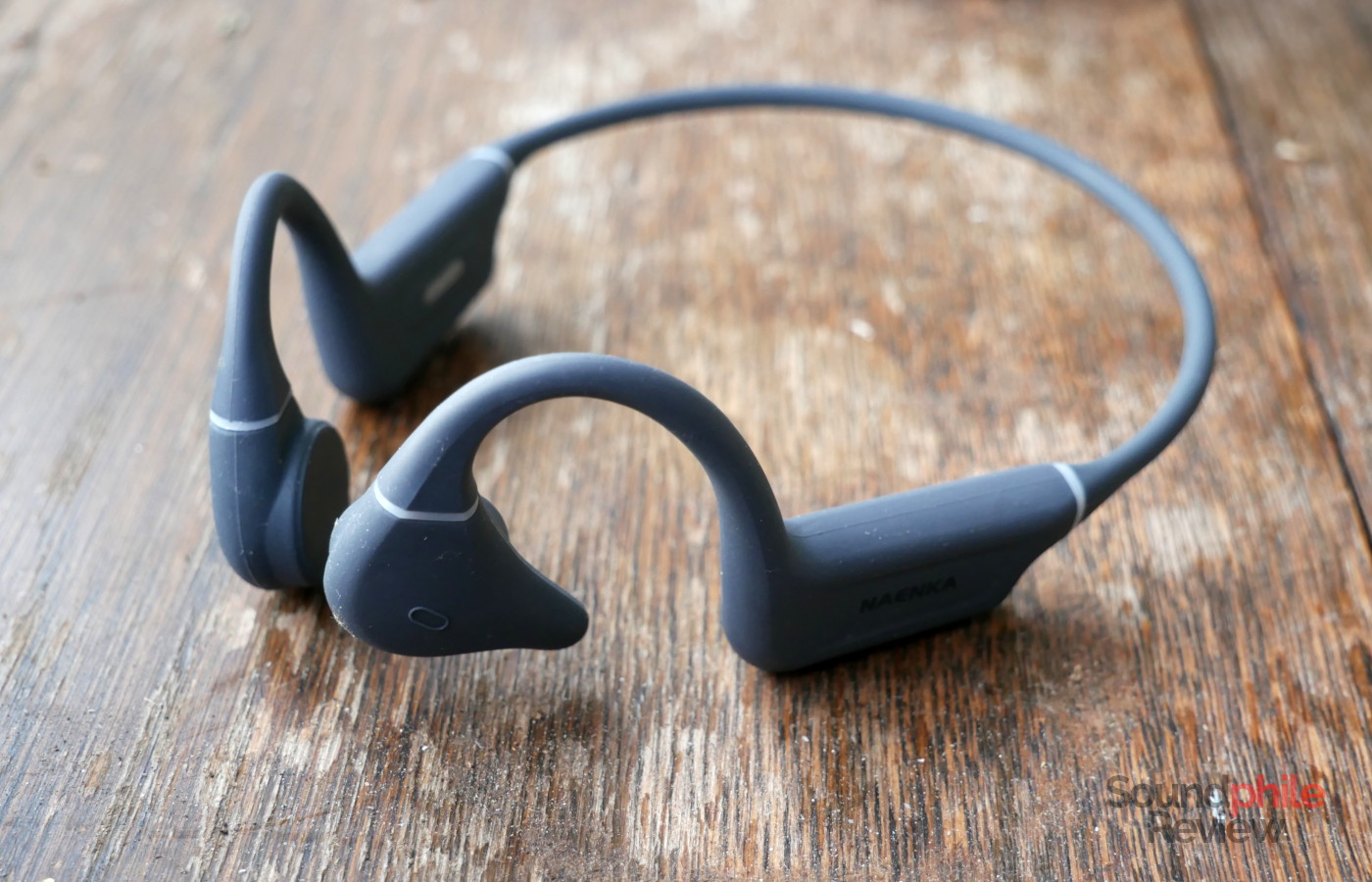


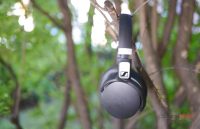
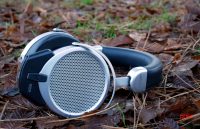
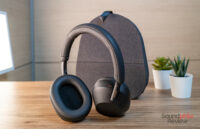


These headphones do have a random mode which is helpful (in addition to the sequential playback).